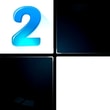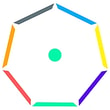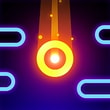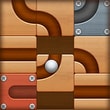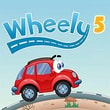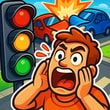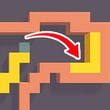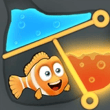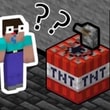🧠🔐 Cold Open: Ink, Mystery, and a Missing Alphabet
The page arrives already whispered on, a line of symbols where letters should be, punctuation peeking out like it knows the punchline. Cryptogram Code – Logic Puzzle, Online Cipher is a small, classy brain-itch: you’re handed an encrypted quote and a promise that the solution is sitting right there, perfectly plain, if you can persuade the alphabet to confess. It’s a Casual Game with the manners of a riddle book and the rhythm of a word racer. You swap letters, chase patterns, test a theory, backspace a dream, and grin when the nonsense snaps into a sentence that sounds like it’s been waiting for you all day. On Kiz10 the input is crisp and the revelations land with that delicious click only word puzzles can make.
📜✍️ How It Works (A Love Letter To Logic)
Every symbol stands for a different letter, and no letter impersonates itself. That’s the contract. You scan the ciphertext and your brain starts sketching: two-letter words ending in ’m? probably “am.” A lone letter with spaces on both sides? “I” or “a” are politely competing. Apostrophes tattle on contractions; repeated patterns reveal twins like “letter,” “little,” “people.” Swap a guess in; the board updates everywhere; suddenly three new words look almost-English. This is deduction with a creative accent. You’re not guessing in the dark—you’re lighting the room one lamp at a time.
🔍📈 Pattern Sleuthing: Frequency Meets Vibes
Common letters love attention. E, T, A, O, I, N walk into nearly every line of English, and the game lets you toggle tiny frequency bars for each cipher symbol so your inner detective can point and declare, “aha, this busy fellow is probably an E.” But frequency is only the starting whisper. S endings pluralize. ING piles up at the tail of verbs like it owns the place. “THE” arrives in threes and fives across long quotes. You’ll also learn the shy ones: J and Q rarely party without U; X lurks in the corners like an eccentric librarian. Blend math with hunches and the text falls open like a diary that secretly wanted to be read.
🧰✨ Tools Without Training Wheels
The interface hands you exactly what you need and gets out of your way. Tap a symbol to open a tiny palette of letters; type to assign; hold to clear. A conflict checker glows softly if you try to give the same plaintext letter to two different symbols. A lock toggle pins confident mappings so stray experiments don’t knock them loose. Hint sparklers exist but behave—reveal one letter where it helps most, not where it steals the fun. If your pride needs a breather, you can undo a chain of swaps in reverse order, like rewinding a thought. On Kiz10, every action is snappy enough that flow survives even your most ambitious theories.
⏱️🎯 Modes For Every Tempo
Classic lets you savor a quote with no clock glaring. Time Trial trims the fat—solve under the par time and your score jazz-hands across the screen. Daily Cipher drops a fresh challenge each day, often with cheeky themes—science day, humor day, history day—so the flavor of the language keeps changing and your habits stay honest. Marathon strings five ciphers; mistakes early become folklore by puzzle four when you nail a finish with five seconds left. Sandbox is zen: unlimited undos, soft music, optional letter banks for new solvers discovering the magic of “the” for the first time.
🧩🔠 Tactics From Solvers Who Stopped Stalling
Start with the shorties. Single letters first, then two-letter words with apostrophes. Treat punctuation as friends: commas hint at clause breaks; colons announce a reveal word coming. When you map a vowel, map its neighbors—consonant-vowel-consonant patterns often spell tiny bricks like “not,” “can,” “man.” If a section fights you, jump lines; solutions rarely begin where your eyes do. Build anchor words—“people,” “because,” “there”—and let sentences scaffold themselves. And if your screen looks like spaghetti, perform the noble reset-flick: keep locked letters, clear the rest, and re-solve in half the time because your brain learned while you weren’t looking.
🎭🗣️ Quotes With Personality (And Real Voice)
What you’re solving is worth reading. Wry lines from comedians, sharp sparks from scientists, tilt-your-head wisdom from philosophers, tiny thunderbolts from poets. Tone matters because tone provides clues. A funny line leans on rhythm and repetition; a serious one likes parallel structure; a lyrical line will dance with alliteration you can spot even before you decrypt it. The moment meaning rushes in, language starts finishing its own puzzle for you—your guesses become inevitabilities because the sentence wants to be itself again.
🔊🎵 A Soundtrack That Thinks In Letters
Audio stays gentle and useful. A soft clack as you assign a letter; a tiny chime when a word completes; a hush when your mapping contradicts a locked placement, nudging you to rethink without scolding. As the board fills, the backing track warms up, like the game is humming along with your brain. Solve the last word and the music resolves into a bright cadence that quietly says, “nice work, cryptographer.”
📈🏅 Progress That Feels Like Practice, Not Chore
You earn badges for streaks without hints, for elegant solves under par, for fixing a contradiction without undo spam. A personal codex logs every quote you’ve unlocked with author, topic, and a microscopic note: “you solved this with 7 letters unmapped” or “fastest solve after midnight.” None of it nags; all of it makes your improvement visible. Watching your average time fall is basically watching your brain do push-ups and then ask for a cooler headband.
🧪🧠 Brain Gym In Disguise
Ciphers do polite violence to laziness. They teach you to juggle alternatives, to abandon sunk-cost letters, to test, measure, and pivot. Those are transferable habits—useful for code, crosswords, studying, and life’s everyday “what pattern am I missing” mysteries. Better still, they’re fun as chaos: that brief moment when you swap a letter and an entire clause becomes English feels like opening a locked door with a bent paperclip while the room cheers.
👧👦♿ Friendly For New Solvers, Fair For Veterans
A tutorial quote walks beginners from “I have no idea” to “oh—this is delicious.” Accessibility toggles swap fonts, raise contrast, and thicken letter shapes so symbols are distinct on small screens. A dyslexia-friendly option adjusts spacing and letterforms. For veterans, Hard Mode hides letter frequency and reserves hints for the final quarter of the solve; Expert sprinkles decoys—proper nouns, numerals in quotes, tricky contractions—while remaining 100% fair. The puzzle never lies; it just expects you to listen better.
🧠💡 Tiny Rituals That Keep Momentum
Say candidate words out loud; mouth-feel catches nonsense fast. Use the “maybe” row—place a faint letter above a symbol as a soft hypothesis without committing. When stuck, chase suffixes: “-tion,” “-ing,” “-ly.” Reserve one symbol to solve last; it gives you a guaranteed victory flick. Celebrate micro-wins—one clean word earns a grin, and grins are fuel.
🌐🚀 Why Kiz10 Makes It Sing
Fast loads, instant undos, and a keyboard that never eats your swaps keep your focus where it belongs—on patterns, not UX. Share your best times or favorite quotes with a tap; replay a daily your friend swears was “easy” and prove that easy is a shape, not a speed. Whether you nibble one cipher between chores or binge a dozen while the tea cools, the platform stays smooth so the puzzle can stay clever.
🎉🔓 Final Line Break, Final Smile
Set a small mission for your next session: solve a quote without touching hints, break a long word purely on suffix logic, or complete a daily under par by trusting frequency first and vibes second. Glide from the shortest word to the loudest clue, lock what you love, and let meaning do the rest. When the last symbol surrenders and the quote breathes in full, take a second to enjoy that warm “of course” that floods your head. Then, obviously, tap Next. Cryptogram Code – Logic Puzzle, Online Cipher on Kiz10 turns letters into levers, guesses into proofs, and quiet minutes into little victories you can read aloud.
 Word Connect Pu
Word Connect Pu
















